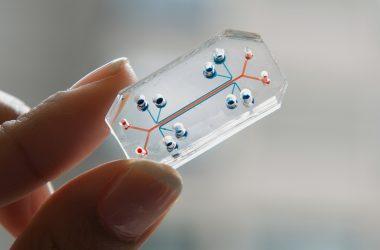Eating milk chocolate every day may sound like a recipe for weight gain, but a new study of postmenopausal women has found that eating a concentrated amount of chocolate during a narrow window of time in the morning may help the body burn fat and decrease blood sugar levels.
Harvard Medical School professor of medicine Frank A.J.L. Scheer and Marta Garaulet, both of the Division of Sleep and Circadian Disorders, Departments of Medicine and Neurology at Harvard-affiliated Brigham and Women’s Hospital, are co-corresponding authors of the new paper published in The FASEB Journal.
To find out about the effects of eating milk chocolate at different times of day, researchers from the Brigham collaborated with investigators at the University of Murcia in Spain. Together, they conducted a randomized, controlled, cross-over trial of 19 postmenopausal women who consumed either 100g of chocolate in the morning (within one hour after waking time) or at night (within one hour before bedtime). They compared weight gain and many other measures to no chocolate intake.
Researchers report that among the women studied:
Morning or nighttime chocolate intake did not lead to weight gain;
Eating chocolate in the morning or in the evening can influence hunger and appetite, microbiota composition, sleep and more;
A high intake of chocolate during the morning hours could help to burn fat and reduce blood glucose levels.
Evening/night chocolate altered next-morning resting and exercise metabolism.
“Our findings highlight that not only ‘what’ but also ‘when’ we eat can impact physiological mechanisms involved in the regulation of body weight,” said Scheer.
“Our volunteers did not gain weight despite increasing caloric intake. Our results show that chocolate reduced ad libitum energy intake, consistent with the observed reduction in hunger, appetite and the desire for sweets shown in previous studies,” said Garaulet.
This work was supported in part by Ministry of Science, Innovation and Universities (MICINN) (SAF2017-84135-R) including FEDER co-funding; The Autonomous Community of the Region of Murcia through the Seneca Foundation (20795/PI/18) and NIDDK R01DK105072 granted to M.G.; M.C.C. acknowledges the support from the Ministry of Science, Innovation and Universities (MICINN) (RTI2018-097982-B-I00); F.A.J.L.S. was supported in part by NIH grants R01HL094806, R01HL118601, R01DK099512, R01DK102696, and R01DK105072 (to F.A.J.L.S.)





